The Grow Awards 2026 🏆 



























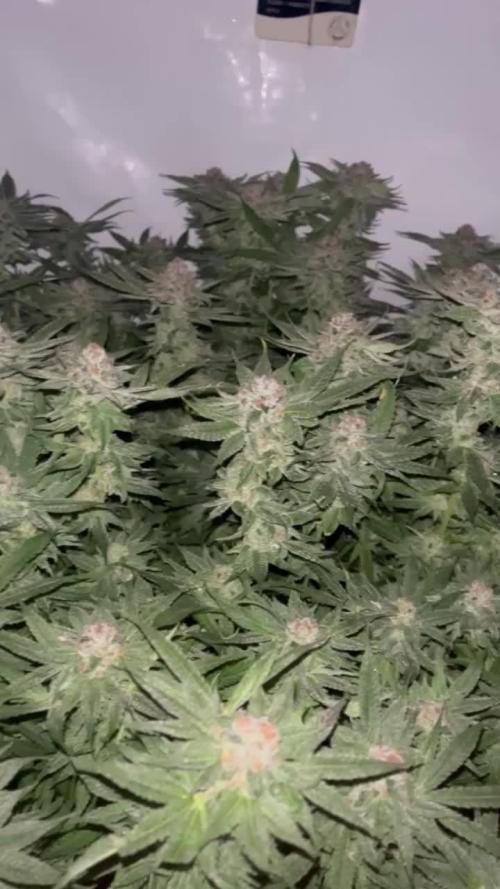



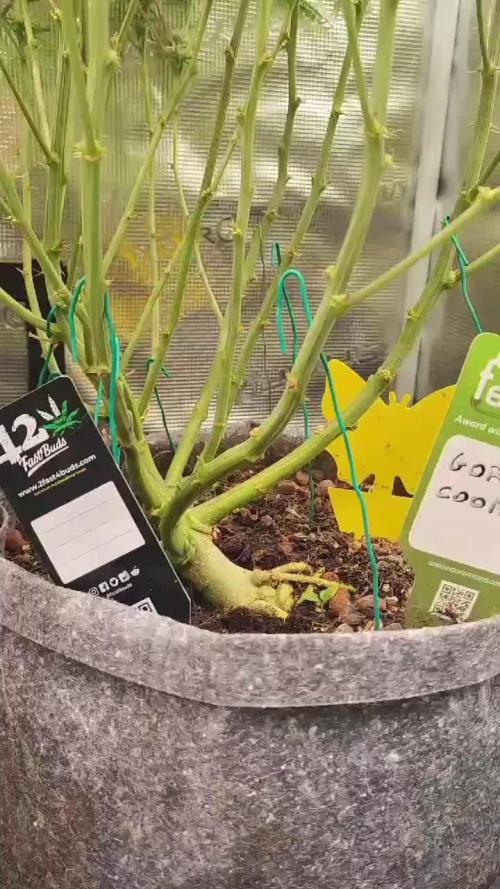
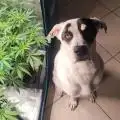
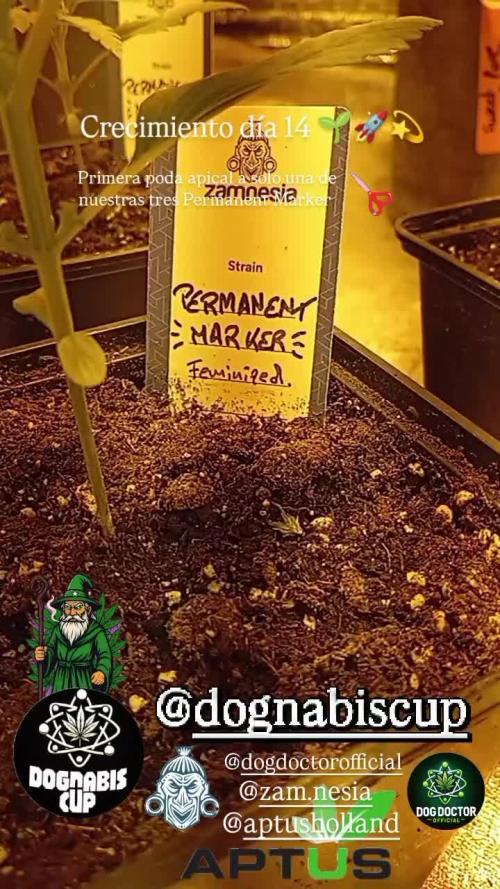



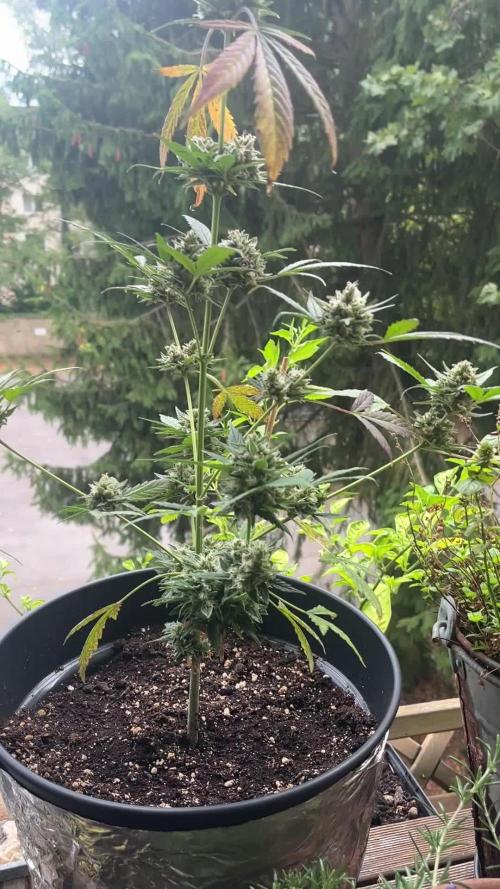

Likes
Comments
Share


@Northern_Ent
Follow
July 27: she’s starting to preflower so I’m going with phyto-forcing using a 730 nm light for a few seconds at dusk each night. This puts plant into dark mode two hours faster so it’s like getting two more hours of darkness making it a 26 h day. Good trick, and super easy.
July 30: video showing how I make my lazy compost tea. Best plants in four seasons of outdoor growing so it definitely works. A similar commercial product would be Recharge which has molasses, Humic acids and bacteria.
Aug 1: plants always look super healthy after a round of compost tea.
Processing
Likes
30
Share


@CBD_Sweden
Follow
2018-03-20 Week 12 Day 1
New week and not much to say. No water or nutes today, just the regular weekly check to see that they look nice and healthy.
Raised the lamp about 10 cm to make sure that the girls don't get burned again.
Crazy Cookies nr1 is 52 cm
Crazy Cookies nr2 is 49 cm
-----------------------------------------------------------------------------------------------------------------------------------
Strain information:
The word synergy is a business term first quoted in the early eighties to describe mutual enhancement through interaction or cooperation, where the end result gained is greater than the sum of the parts used. What do synergy and the Crazy Cookies cannabis strain have to do with each other you may well ask?
The parents of the forthrightly indica Crazy Cookies are marijuana royalty. OG Kush and Girl Scout Cookies. These strains of contemporary legend have been combined to cerebrum shattering effect. The cured flowers deliver a mouth-watering and couchlocking 24% THC. The initial delectable spacey upbeat onrush compliments of the Durban Poison coursing through the genes of the Cookies soon becomes a lush and rich, inescapably delicious body flux.
There should be a picture of a Crazy Cookie nugget in the dictionary next to the word synergy. Crossing the OG back into the Cookies has amplified the psychoactive effects of the notorious lineage of both parents. This is an indica with a capital I.
As a breeder it would be fair to assume that injecting more OG into the Cookies would result in an OG-dominant Cookie, or even close to a pure OG, but something else has happened. Some long dormant genetic switch has been flipped and a standalone indica has emerged whose spicy notes and earthy tones, hints of grape and horny pheromone are an absolute pleasure.
Paying this breed some careful attention as it grows will reward you substantially, indoors or out. Typical hybrid vigour is shown throughout each grow phase. Stout plants to 80cm can be expected indoors and muscular examples with fluted stalks growing to two metres can be easily achieved outdoors. Good bracing is necessary as the flowers mature. With more than 500g at harvest per robust plant, colas can easily snap and twist branches.
-----------------------------------------------------------------------------------------------------------------------------------
Likes
24
Share


@FlynnRyder
Follow
Alrighty, guys and gals it's another res change and another opportunity to make mistakes haha. All in all, I actually got a lot of helpful advice through the questions forum so a big shout out to anyone that helped with those issues. Unfortunately with the rest of the canopy being somewhat the same height, I decided to leave the lights on 100%. I can't raise them any higher and I just have to better in veg when it comes to keeping the canopy even and encouraging bud sites. I'm super tempted to trim up the top big fan leaves but I honestly am not sure if it would help any at this point in time. I'm looking forward to giving the buds more time to grow though and I'm hoping a surprise myself with a great turnout. I'm still at a loss for when to harvest as far as what to look for with the buds aesthetically. I've heard the trichomes cloudy bit so many times but I guess I just cant tell if I should harvest what's larger done and cloudy then harvest the rest later etc.
Likes
41
Share


@Growing88
Follow
Sono felicissimo,abituato alle hps e cmh e non riuscivo ad ottenere grandi risultati, con una hps 600 watt massimo 450 grammi,con un led 730 ho fatto 1500 grammi,waooo😍😍😍
Likes
20
Share


@Alpha_Green
Follow
Week 6
2nd week of flowering:
Slowly but surely, the whole thing had taken shape. And in the way I'm usually used to.
"Sow love, reap happiness."
Hello dear plant friends, please forgive me for my time delay in the grow diary. A lot is happening in real life for me right now and I had to get used to it. Unfortunately, one of my beloved cats died suddenly for a reason unknown to me. A long-time friend and companion. And in addition, I am very busy modernizing my grow room, expanding capacities and the current grow also requires a lot of attention, as I am passionate about new crazy training methods. All this distracts me from my grief and the loss of my dear furry friend and helps me a lot to get back on my feet mentally.
Well, I don't want to keep you in suspense any longer, so here's a little preview of what will change and why.... 🤩
But that was only a short fitting and both lamps will of course come in a new generous Homebox 100 Q +
I think the time has now come for me to leave the tried and tested old shell and go new exciting ways. I feel ready for the next challenges in this wonderful field of gardening.
Dear people, be curious about what is to come. I can't wait to share it all with you.
And now back to week 6 and last summer's Grow...
Enjoy! 😊
And again my Biotabs was my secret weapon: the fermented compost tea an outstanding game maker.
I usually start at the end of flowering week 2 and combine it alternately with the enchanting Bio PK - Booster from Biotabs until shortly before the end.
I am firmly convinced that these two components complement each other super nicely.
Likes
14
Share


@danwho
Follow
9/15/2024
Stretch is moving along nicely. Only bummer is that the tops are crowding the light fixture and reducing the total light penetration. Working to keep the PPFD and DLI in a reasonable range and even across the canopy.
First day of week 3 bloom nutrients. Both plants are looking incredible and moving along nicely into flower. Working hard to keep Plant A from overcrowding plant B.
9/17/2024
Adjusting fan setup to promote better circulation around the tent. Continuing to move the light over plant A an inch at a time. Running out of room slowly and will likely be forced to supercrop. Added 40watt bar light over plant B to offset the take over from plant A.
9/21/2024
Discovered herm signs all over plant B during trimming. Decided to cull it to avoid issues with plant A. Going to work to tailor the tent setup to push plant A going forward. The empty bucket will remain in the tent but is disconnected from its feed line and return line to the reservoir.
Due to the herm in plant B, I left a lot more plant material on Plant A than I initially planned. With more room, it should hopefully bush out even more! Flower development on plant A is good with great stacking thus far. Still stretching, but slowing down. Any more stretch will require super cropping to avoid burning as I turn the lights up over the next two weeks, Planning to add lower lighting now with the additional space.
Likes
27
Share


@Hawkbo
Follow
Purple Lemonade , Gelato 1&2, LAK 2&3 are all just about done theyll be coming down over the weekend or early next week. T26, Pineapple Express, Mexican Airlines, LAK 1, 6 Shooter Blue Dreamatic and Cream Cookies are all on the flush but will need a few more before chop. This tent reeks up the whole block it's pretty intense skunk in the driveway right now. There will be one more update I'm guessing for most of these before the harvest update. This was the most successful autoflower crop I've had in a long time I think theres some really good quality buds on some of these. I'll put the video up now and as I go thru the pics theyll be uploaded so if your interested come back tmm for the pics.
Likes
2
Share


@EtnoGrow
Follow
1st photo
We did the scrog, it helped us a little more to use as support to tie the branches with threads and manipulate them as we wanted, so we tamed it. but they kept growing as my colleague affirms
Likes
49
Share


@masterofsmeagol
Follow
5/10 Got up super early for wife's appointment at 7 came home and transplanted 4 of the purple punches. Transplants went good. Soil was too dry and a couple fell right in the hole but I was messing around showing my dad. It just got dropped in the hole a little harder lol. The other that happened to is fine though. Definitely make sure your soil is moist enough before transplanting. My transplanting technique for 3 gallon is to put soil on bottom. Set cup in at appropriate distance then replace cup with plant with soil filled cup and fill around it. Leaves the perfect hole. Then you just snip the cups twice on each side, peel it down and fold the cup down and cradle the bottom and in the hole it goes! Holes have mykoscand a little like water. I water a little after transplant. I misted soil whole mixing it up.
5/11 Dad left the windows open last night "because the soil smell was bothering Lynda." I couldn't ficking believe it. They were all fine when I got back but still. Everything is transplanted into 3 gallon containers bit that 1 purple punch that is a little bit dwarfed. I looked at the bottom of the cup and drainage wasn't as good. Must've been the last cup and the jail didn't go all the way through in a couple places. I increased the drainage on that little dwarf and I'll transplant it when I get time. We are going to have some good weather coming up. I need to get my cage moved, my bags sanitized and get on a good watering routine.
UPDATE: Went back over at four and everything's dry as fuck but the leaves are uo and every one of them looks happy so I'm holding off watering. I'll start with a quart probably tomorrow. Also cleaned out tge cage and secured the handles to move it. Only thing left is cleaning and sanitizing. These girls have a south facing window and they LOVE it. It was 80 today. I hope we have an early season.
5/12 Transplanted the last purple punch today. I could easily tell the problem was drainage. It was the last cup I had stacked when I drove the nail threw so it didn't pierce all the way the the other slips and tac holes apparently weren't enough. Used mykos and same soil mixture. Soil was extremely dry. I lifted a pot with dry soil and these were heavier. Commercial buddy said to start with a quart a pliant and see how it goes but I kind pussed out and only gave them 24fl 0z a plant. Half the quart. I asked if I should water more and he said to just wait and see how they like this water and up it to a quart next time maybe quart and a half. Im just leery of overwatering. When i watered SOME of them the water literally just sat there and took forever to absorb. Plants werent wilting though. Soon theyll be going outside during the day and in mdoors at night.
UPDATE: Went back over at two and everything looks AMAZING. Healthiest looking plants I've grown. Leaves all pointed up. I'm taking my commercial dudes advice and hoping the water next watering. For now, they're doing amazing.
5/13 Everything is doing greatcso far. Gotta figure out when to start nutes. Considering adding silica but don't want to raise ph to much. I'll consult with others but my the soil blend I'm using is full of nutes.
5/14 Rushed morning and I wanted to water bit the plants looked great still. Sticking my hands deeper I can feel a little moisture deeper down or in the drain holes so I decided to give the blueberry cheese and the 10th planet a "touch of kindness" which was a small circle of water from a small watering can around the outside edge of whete the rootball should lid be. I'm working on getting a watering g schedule down.
UPDATE: Went back over at five and everything was looking good with leaves praying. Maybe my half measure helped. Doubtful but still. Tomorrow I plan to water. Since the soil has tons of nites ill probably hold off a little while longer before starting the nutrient schedule. I want to make sure I've got the watering down first. One thing at a time.
5/15 The 10th planet and Blueberry Cheesecgot their first REAL watering since transplant. Still being cautious I watered 28fl Oz a plant. I phed the water with an indicator solution and ph down. I gave the purple punches a "cup of kindness" which was a circle of water around the transplant hole. Can't waif to get a watering schedule down. I wanted to start nutes but my soil is full of them and i believe it's too early. I didn't see ANY run off from this watering. I think that's good as I'm not looking to wash away the nutes in the expensive soil I use. I need to start HST as well but I'm doing things proper and "one at a time". That way if I run into a problem I'll know what I did and how to rectify it. At least I hope.
UPDATE: Went back over at 3 leary that I may have "overwatered" but the plants ALL looked AMAZING and had shot up like an inch! Looking into hst and will probable fim a few. Top a few and leave one to grow naturally. Can't wait to see how these girls do outside.
5/16 Wow. Just wow. Plants are doing phenomenal! Since the watering went really well I watered the purple punch bit I only used about 16fl Oz as the plants were a little smaller than the others. I'll up it to a quart next time like I did with the others. I want to USE the nutes in my soil so im not washing them all away by watering to run off. I topped 2 10th planet's and FIMed one of them. I want to see how the respond then I'll begin training the others. Off to a Great Start!
5/17 Glad I held off watering. It's raining today. Just showers. We haven't gotten any of that extreme wind we usually do. I have the plants supported but I still worry. Definitely more than I should. Plants are still doing good and acclikatimg to their new homes.
Processing
Likes
150
Share


@RussianGrower
Follow
I welcome all my like-minded people who are in different parts of the world. I thank everyone who provides moral support to Russian plant growers. 👍
It's me again-an underground Russian grower with some experience with different strains of cannabis. Subscribe to my diary if you want to follow my progress and learn a lot about the life Of Russian growers, and the difficulties they face every day👊
Today my have my plants 62 day life. 9 weeks. today I visited my underground production.
As I will have difficulties in financial investments, I had to collect from improvised materials additional ventilation and air filtration. In addition, I installed forced ventilation at the entrance with a computer power supply.
Bubblelicious Auto-with the genetics of this cannabis variety I was familiar before, so knew what to expect from these plants. I can say one thing, it is the most delicious and sweetest sort of marijuana I grow. Also, it produces a lot of oils which I think it is suitable for extraction or cooking cannabis food. I look forward to the harvest
Neville's Haze Auto - this variety of cannabis shows an unprecedented strength in growth, its flowering only in the early stages, and should take a long time before its full sexual maturity.
In addition, I made my girls an intimate haircut, so that their genitals become like full-fledged women.
In General, I'm doing well, thanks to this resource and the advice received here, I manage to fight with the stench, I'm free and I'm not going to finish my activities. Until next time. 😉
Likes
3
Share


@Scottydarkmoonbuds
Follow
These ladies are doing great! 2nd week of flowering and the lemon cherry cookies are showing purple already ⛄🎄❤️ very excited to see how these turn out!
Likes
12
Share


@valiotoro
Follow
Hello everyone week 4 of flower has passed for this LSD-25 auto 🎢
For the feeding schedule i stopped feeding Power Roots and Pure Zym and started feeding Green Sensation 0,5/l
Mars hydro FC-E6500 75%
have a great day and wish you all happy growing 😎👨🌾🏻
Likes
37
Share


@Dapper_Buds
Follow
TrainWreck is going well full steam ahead. All jokes aside. She has double in size and she is starting to fatten up the lower end is fattening up also. Her ph is reading 6.4 with a run off 840ppm temps is running at 79 degrees, an humidity is at a hard 45% Rh. She is taking .75 gallon a day. Let’s see what this week will bring. Thank for viewing an happy growing!
Likes
3
Share


@Andres2pistilos
Follow
Eata semana comprende del 9/11 hasta el 15/11
Voy a cambiar el fotoperiodo a floración el dia 17/11
Está semana subí la luz al 100% de potencia, he continuado con algunas podas de hojas ocasional
Baje a 2.0 de EC y me mantengo entre 5.5 y 5.8 de pH
Likes
3
Share


@MyLittleGarden
Follow
Blütewoche 8 – King Juice kurz vorm großen Finale
Zeitraum: 10. Juli bis 17. Juli
Blütetag: 49 bis 56
Blütewoche 8 ist durch und langsam wird's ernst. Die King Juice steuert ganz klar auf die Zielgerade zu. Ich hab diese Woche nicht viel verändert. Ganz entspannt gegossen. Temperatur und Luftfeuchtigkeit kontrolliert. Der Wert lag zwischen 50 und 64 %, also alles im grünen Bereich.
Einmal hab ich leicht entlaubt, damit die Luft besser zwischen den Buds zirkulieren kann. Zusätzlich hab ich noch einen Mini-Luftentfeuchter in die Box gestellt. Nicht das die Luftfeuchtigkeit doch nochmal höher wird als gewünscht. Gegen Ende der Woche gab’s dann nochmal eine ordentliche Ladung Wasser, insgesamt 8 Liter und auch die Würmchen haben was zu knabbern bekommen.
Die Buds reifen weiter aus, und unter dem Mikroskop sieht man schon was. Einzelne Trichome verfärben sich von klar zu milchig und zum Teil schon leicht bernsteinfarben. Es ist noch dezent, aber der Prozess ist ganz klar im Gange. Ich schätze, eine Woche braucht sie noch, um richtig fertig zu werden.
Wenn alles so weiterläuft, wird nächsten Donnerstag geerntet. Ich werde das natürlich noch ein paar Tage weiter beobachten und mich dann endgültig entscheiden aber mein Gefühl sagt, nächste Woche ist es so weit.
Die Buds sind der Wahnsinn, richtig schön fett, kompakt, steinhart und voll mit Harz. Sie glitzern, kleben wie Sau und verströmen einen unfassbar fruchtig-süßen Duft 😍
Und was auch cool ist, ein paar Blätter haben sich leicht ins Lilane verfärbt, nicht ganz so stark wie bei ihrer Mutter, aber da geht vielleicht in der letzten Woche noch was. Mal sehen, bin gespannt.
Ich kann mich ehrlich gesagt kaum sattsehen. Es ist einfach jedes Mal wieder ein Genuss, die Box aufzumachen und diese Pracht zu bestaunen. Ich bin super happy mit der Entwicklung und freu mich riesig auf die letzte Woche 😊
Likes
25
Share


@JonnyKush
Follow
hello growmies! day 51 finally the pre-flowers begin to appear. I apologize for the few photos but unfortunately they really filled the box and I find it difficult. overall I have to say they look in perfect shape! I will keep you updated thanks for passing by. like and comment! good day and beautiful growth to you 🌳🌱
Likes
1
Share


@youdan
Follow
SETTIMANA DA PAURA! E CRESCIUTA VELOCISSIMA E HA RIMPITO QUAI 1 METRO QUADRATO IN VERAMENTE POCO TEMPO, SIAMO PROSSIMI AL RACCOLTO. SI SPERA CHE POSSA MATURARE VELOCEMENTE
Likes
Comments
Share


@ElBrujoTHC_Official
Follow
Segunda semana cumplida para nuestras Permanent Marker, pronto las acompañarán nuestras Jealousy Diesel auto 😉💫
Likes
57
Share


@AsNoriu
Follow
Day 43. Light is on max output, heat enormous and they RUN !!!! thought intensity will stop them a bit , but i think i do only worse ... We have +30 heatwave in UK, i live in attic , so for 4 more days everything will be out of control.
Watered today. 6.3 phed water.
I love simple and affordable Mars Hydro products, if you can cope with heat TSL2000 can do magic in your tent !
Will update after heat wave us over. Should be in 4 days back to +20 ;)))
Day 45. They GROW !!!! Distance is insanly small, but i have 30 cm of space left, wont move light for a week, then i will try to have 20 cm at least again.
Planing last top up, need two more waterings before it, so it should be on last day of this or first of next week.
Thinking to take down all LST at that time, need pots to breath better, too thin fabric, they dont keep form.
Day 47. Drink every two days !!! 4 liters goes to nothing !!! Huge, still streching, tops almost rubbing TS2000, heat 30 inside, humidity 65-68 ..... will need heavy clearing again !!! Devil is looking droopy because was just watered.
Happy Growing !!!!
Likes
2
Share


@YoyoDE
Follow
Nun .. ich hätte ja schon längst geerntet, wenn diese beiden Mädels nicht permanent Unmengen frischer weißer Stempel produzieren würden. Spätestens in 1,5 Wochen muss ich aber ernten, damit sie vorm Urlaub noch trocken können. Mal sehen wie sie sich bis dahin entwickeln.


















